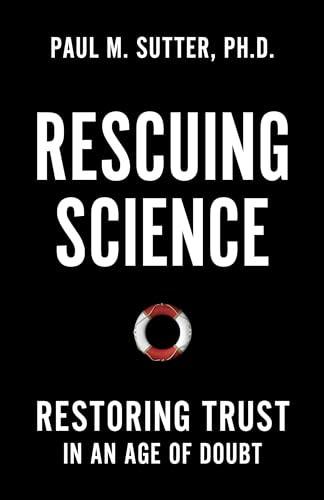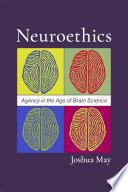2 TheTerritoriesofHumanReason
Clayton’slandmarkbook aboveall,theseeminglyinexorablemove awayfromthenotionofasingleuniversalrationalitytowardsa pluralityofculturalanddomain-specificmethodologiesandrationalities.Inparticular,itseekstoaffirmandexploretheintellectual legitimacyofbothinterdisciplinaryandtransdisciplinarydialogue³in thisageofmultiplesituatedrationalities,focussingontheinteraction ofthenaturalsciencesandChristiantheologyasasinglecasestudy withthepotentialtoilluminateothersuchdiscussions.
Thesuggestionthatthenaturalsciencesthemselvesadoptapluralityofmethodsandcriteriaofrationality findsamplesupportin scientificpractice.ThebiologistStevenRose,reflectingonthecomplexityofthescientifictaskofengagingandexplainingtheworld, drewaconclusionhebelievedtobewidelysharedamongreflective scientists. ‘Asamaterialist,asallbiologistsmustbe,Iamcommitted totheviewthatweliveinaworldthatisan ontologicalunity,but Imustalsoacceptan epistemologicalpluralism. ’⁴ Wecannotreduce allcognitiveactivityto ‘asinglefundamentalmethod’,assomescientistssuggest,⁵ butmustrathermakeuseofarangeofconceptual tool-boxes,adaptedtospecifictasksandsituations,togiveascompleteanaccountaspossibleofourworld.⁶ Differentexplanatorytypes or ‘stances’ areevidentacrossdisciplines anobservationwhichhas ledtoaseachangewithinthephilosophyofscience,whichhasmoved awayfromolderreductionistoreliminativistviewsofexplanationin
³Thedistinctionbetween ‘interdisciplinary’ and ‘transdisciplinary’ iscontested. Acommonwayofunderstandingtherelationbetweenmultidisciplinary,interdisciplinary,andtransdisciplinaryapproachesistoseethemrespectivelyasadditive, interactive,andholistic.Onthiswayofthinking,interdisciplinarityaimstocreate interactivelinksamongdisciplineswhichallowsthemtobeseenasacoordinatedand coherentwhole.Transdisciplinarityaimstointegratedisciplinaryinsightsandtranscendtheirtraditionalboundaries,thusaddinganewelementtothediscussionthat cannotbesustainedbyanysinglediscipline.Foradiscussion,seeLeavy, Essentialsof TransdisciplinaryResearch;Osborne, ‘ProblematizingDisciplinarity,Transdisciplinary Problematics’
⁴ Rose, ‘TheBiologyoftheFutureandtheFutureofBiology’,128–9(my emphasis).
⁵ See,forexample,LadymanandRoss, EveryThingMustGo;Rosenberg, The Atheist’sGuidetoReality.Foracritiqueofsuchascientificexclusivism,seeKidd, ‘ReawakeningtoWonder’
⁶ Gigerenzer, ‘TheAdaptiveToolbox’,38–43.Foramorephilosophicalapproach, seeMidgley, TheMythsWeLiveBy,76–7.
favourofpluralisticapproaches.⁷ Formany,thislineofthoughtleads ultimatelytotheconclusionthatthe ‘onlyroutetoadeeperunderstandingofourselvesisthroughradicalepistemologicalpluralism’ ⁸ Yetwhilethepluralisticnatureofscientificenquiryseemsclearto anyoneacquaintedwithitshistoryorpractice,theimplicationsofthis pluralismrequirefurtherexploration.
MAPPINGTHETERRITORIESOFHUMANREASON
Thisbookoffersatentativeandprovisionalmappingofhuman rationality,surveyingtheformsofreasoningandcriteriaofrationalitythathavecharacterizedtheproductionofknowledgeacross cultureandhistory,andwithinspecificdisciplines.Thefailingsof certainapproacheswhichemergedduringtheEnlightenment specifically,afamilyofphenomenologicalviewsthatsawhuman reasonashistoricallyandculturallyinvariant,orideologicalviews thattooktheapproachestoreasondevelopedbyWesternEuropean illuminati oftheeighteenthcenturyasnormative arenowseento dependonunreliablemappingsofthemultipleterritoriesofhuman reason.Thereisnouniversal ‘republicofreason’—rather,wehaveto contendwithanarrayofdistinct,yetoccasionallyoverlappingand competing,epistemicterritoriesandcommunities.Thishasledto growinginterestintransdisciplinarity thequestfor ‘articulated conceptualframeworks’ thattranscendthenarrowscopeofdisciplinaryworldviews,andthusofferanenrichedanddeepenedunderstandingofourworld.⁹
⁷ Keil, ‘ExplanationandUnderstanding’,231–3.
⁸ Dupré, ‘TheLureoftheSimplistic’,293.ThereisnoneedtofollowPaul Feyerabendandmovefromtherecognitionofapluralityofmethodsinsciencetoa formofrelativismthatwouldbeseenbymany,ifnotmost,scientistsasultimately compromisingtheintegrityofscience:Pigliucci, ‘FeyerabendandtheCranks’;Kidd, ‘WhyDidFeyerabendDefendAstrology?’
⁹ Klein, ‘DiscoursesofTransdisciplinarity ’.Theemergenceoftransdisciplinarityis usuallydatedtoaconferenceheldin1970attheUniversityofNicebytheOrganizationofEconomicCooperationandDevelopment(OECD),whichrecognizedthe needfor ‘acommonsystemofaxiomsforasetofdisciplines’ thattranscendsthe narrowscopeofdisciplinaryworldviewsthroughanoverarchingsynthesis.Theterm
Inexploringthemultipleterritoriesofhumanreason,thiswork aimstocontributetodiscussionsaboutthepossibilitiesofinterdisciplinaryandtransdisciplinarydiscourseandreflection,withthe objectofenrichingknowledgeandunderstandingbyavoidingdisciplinarycompartmentalizationandencouragingatransdisciplinary inquirycharacterizedbyacommonorientationtotranscenddisciplinaryboundariesandanattempttobringcontinuitytoenquiryand knowledgethroughattentiontocomprehensivenessandcreatingporousboundariesbetweenconceptsanddisciplines.Whilethisquestion isofgeneralinterest,itisofespecialinteresttotherapidlygrowing fieldof ‘scienceandreligion’,whichhasestablisheditselfsinceits emergenceinthe1960sasoneofthemostinteresting,challenging, andcontestedareasofacademicinvestigationandreflection.
ThephilosopherJohnDeweyfamouslyarguedthatthe ‘deepest problemofmodernlife’ wasourcollectiveandindividualfailureto integrateour ‘thoughtsabouttheworld’ withourthoughtsabout ‘valueandpurpose’.¹⁰ Dewey’sdistinctproposalfortheredirection ofphilosophy,bringingitbackintocontactwiththedeephuman concernsfromwhichhebelievedithadoriginallysprung,mayhave beenrelegatedtothedomainofintellectualhistory;theissuehe raised,however,hasnevergoneaway.Othershaveechoedhisconcernaboutdivorcingphilosophyfromlife’sdeepestquestionsand concerns,suggestingthatapurely ‘objective’ accountoftheworld disregardsmostofwhatmakeslifeinteresting.¹¹Science ‘mayprovide themostusefulwaytoorganizeempirical,reproducibledata’,butits powertodosois ‘predicatedonitsinabilitytograspthemostcentral aspectsofhumanlife’—suchaslove,beauty,honour,andvirtue.¹²
YethowcanwefollowDeweyinaimingtointegratesuchthoughts abouttheworld,value,andpractice,whileacting rationally throughoutthisprocess?Theempiricalinvestigationofourworldisthe domainofthenaturalsciences,whichsomeholdtobecharacterized
‘transdisciplinary’ iswidelyattributedtoJeanPiaget:see,forexample,López-Huertas, ‘ReflectionsonMultidimensionalKnowledge’ .
¹⁰ Dewey, TheQuestforCertainty,255.OnDewey,seeKitcher, ‘TheImportanceof DeweyforPhilosophy(andforMuchElseBesides)’
¹¹Davies, WhyBeliefsMatter,v.
¹²Kalanithi, WhenBreathBecomesAir,151.
byarationalprecisionwhichisquiteabsentfromanyexplorationof non-empiricalnotions,suchasvalue,meaning,orpurpose notions thataretraditionallyseenasfallingwithinthedomainofreligion, whichprovidesawayofhelpingindividualstotranscendtheirown concernsorexperienceandconnectupwithsomethinggreater.¹³ MaryMidgley,forexample,suggeststhatscience ‘onlybeginsto haveavalue’ whenitis ‘broughtintocontactwithsomeexisting systemofaimsandpurposes’.¹⁴ Togiveafullaccountofourcomplex world,enablingustolivemeaningfullywithinit,requiresthat wedevelopacorrespondinglycomplexarrayofresearchmethods, disciplines,andtraditionsformakingsenseofit.Italsorequiresa discourseoftransgression aprincipledbeliefthatdisciplinary boundariescanbeabarriertoadeeperformofknowledge,andthe developmentoftransdisciplinarystrategiestoallowdiscourseacross andwithinthoseboundaries.¹⁵
Infamouslydeclaringthat ‘ a picture helduscaptive’,¹⁶ makingit difficultforustoliberateourselvesfromitsimaginativethrall,Ludwig Wittgensteinwasbasicallypointingouthoweasilyourunderstanding ofourworldcanbecontrolledbyan ‘organizingmyth’¹⁷—aworldviewormetanarrativethathas,whetherwerealizeitornot,cometo dominateourperceptionofourworld,ineffectpredisposingusto interpretexperienceincertainmannersasnaturalorself-evidentially correct,whileblindingustoalternativewaysofunderstandingit.We areeasilyseducedbysimplistic,captivatingnarrativesaboutour world,comingtobelieveweareseeingthings ‘thewaytheyreally are ’,whenweareinfactseeingtheminaspecificway,whichisoften
¹³Park, ‘ReligionasaMeaning-MakingFrameworkinCopingwithLifeStress’ ; Emmons, ThePsychologyofUltimateConcerns;Wong, TheHumanQuestforMeaning.Thereis,ofcourse,continuinginterestinsuchconceptswithinphilosophy:see, forexample,Wolf, MeaninginLife;Seachris, ‘TheMeaningofLifeasNarrative’
¹⁴ Midgley, TheMythsWeLiveBy,21.Asimilarthemeisfoundthroughout Wilson, Consilience
¹⁵ SeeespeciallyBiagioli, ‘PostdisciplinaryLiaisons’;Osborne, ‘Problematizing Disciplinarity,TransdisciplinaryProblematics’.Foraclassicaccountofthedeliberate attempttojustifyandenforcedisciplinaryboundaries,seeGieryn, ‘Boundary-Work andtheDemarcationofSciencefromNon-Science’ .
¹⁶ Wittgenstein, PhilosophicalInvestigations,§115.
¹⁷ ForthisinterpretationofWittgenstein’suseof Bild,seeEgan, ‘Picturesin Wittgenstein’sLaterPhilosophy’
TheTerritoriesofHumanReason
sociallyconstructedratherthan ‘natural’,andarethusfailingto appreciateboththespecificityandlimitsofthisperspective,orthe plausibilityofalternativewaysofframingourworld.Wittgenstein’ s useoftheanalogyofapicture(Bild)aimstofreeusfromthegrip which certain pictureshaveonus,¹⁸ especiallybyinvitingustoview alternativeparadigmsorframings,whichmightofferabetterrenderingofourworld.
Wittgenstein’spointhasparticularforceinthe fieldofscienceand religion,inthattheculturallyregnant ‘picture’ oftheirrelationship holdsthattheyareinperennialandessentialconflict.¹⁹ Historical researchhasexposedthe flawsofidealized,syntheticaccountsof ‘the relationshipbetweenscienceandtheology’,makingitclearthat amultiplicityofsuchaccountsmaybegiven,andthatthetaskof judgingwhichis ‘right’ liesbeyondnormativedefinitivejudgement onthebasisoftheresourcesavailabletous.Religionandscienceare boththeoreticalconstructs,ratherthannaturaltypes;bothareshaped byculturalperceptionsandagendas,whichseverelyimpedeany attempttoofferessentialistaccountsoftheirnature,ortheirpossible interactions.²⁰ Yetthe ‘ conflictmyth’ retainsitsappeal.Beforeproceedingfurther,weneedtoreflectonthispoint.
MAPPINGTHETERRITORIESOFSCIENCE ANDRELIGION
Inaseriesofimportantandinfluentialhistoricalstudiesofscience andreligioninthe1990sandbeyond,focussingespeciallyonthe nineteenthcentury,theOxfordscholarJohnHedleyBrookehas
¹⁸ SeetheimportantessayinBaker, Wittgenstein’sMethod,260–78.
¹⁹ Fortheoriginsofthe ‘ conflict’ mythwhichunderliesthisinfluentialyet unreliablemapping,seeRussell, ‘TheConflictMetaphorandItsSocialOrigins’ ; Turner, ‘TheVictorianConflictbetweenScienceandReligion’;Watts, ‘AreScience andReligioninConflict?’;andespeciallyHarrison, TheTerritoriesofScienceand Religion,172–6,191–8.
²⁰ Hencethewidespreadscholarlydemandstoacknowledgethat ‘religion’ (and ‘non-religion’)arecategoriesofsocialdesignationwhichlackempiricalorscientific warrant:seeespeciallyJong, ‘On(Not)Defining(Non)Religion’
arguedthatseriousscholarshipinthehistoryofsciencehasrevealed ‘soextraordinarilyrichandcomplexarelationshipbetweenscience andreligioninthepastthatgeneralthesesaredifficulttosustain.The reallessonturnsouttobethecomplexity’.²¹Brooke’sanalysishas foundwidespreadsupportwithinthescholarlycommunity.Peter Harrisonhaspointedoutthat ‘studyofthehistoricalrelationsbetween scienceandreligiondoesnotrevealanysimplepatternatall’,²²such asthemonomythofthe ‘ conflict’ narrative.Itdoes,however,disclose a ‘generaltrend’—thatformostofthetime,religionhas facilitated scientificenquiry.
Thisscholarlycomplexificationoftherelationofscienceand religionhasleftmanyfeeling ‘emotionallyandintellectuallyunsatisfied’,inthatit ‘seemstohavelittletorecommenditbesidesits truth’.²³Forsome,anysuggestionthatscienceandreligionmight exist,eventoalimitedextent,inanon-confrontationalrelationship seemstocauseculturalanxietyanduneaseinsome,²⁴ perhapsreflectingafearofintellectualcontaminationorcategoryviolation.Yet whilethisaccountmaylackpopularappealorasimplerhetorical flourish,ithastheenormousadvantageofcorrespondingmore closelytothehistoricalevidence,andthusoffersamorereliable basisforinformeddiscussionoftheissues.
PickinguponWittgenstein’simageofalimitingandimprisoning Bild,PeterHarrisonhasarguedthatthe ‘picture’ ofscienceand religionthathasheldWesternculturecaptiveforthelastcenturyis a flawedconceptualmapthatforcesthedisciplinesofscienceand religiontobeseenasexistinginanagonisticrelationship.²⁵ The perceptionthusbecomesareality.Yetwhetherscienceandreligion areseentobeatwarwitheachotherdependsonhowtheirrelationship isframed onwhatmapisusedtoidentifytheirrespectiveterritories.
²¹Brooke, ScienceandReligion,6.ForBrooke’spersonalreflectionsonhishistoricalresearch,seeBrooke, ‘LivingwithTheologyandScience’
²²Harrison, ‘Introduction’,4.
²³Numbers, ‘SimplifyingComplexity’,263.
²⁴ Forreflectionsonthegroundsofsuchanxiety,seeRussell, InventingtheFlat Earth,35–49.Thereareinterestingparallelsherewiththevigorousattemptsin classicalGreekculturetodisentangleanddisconnectscience,mythology,magic, andphilosophy:seeLloyd, Magic,ReasonandExperience,2–58.
²⁵ Harrison, TheTerritoriesofScienceandReligion,145–82.
Amaprepresentsavisualmatrixdevelopedtoconstructknowledge andmeaning,combiningvariousempiricalperceptionsandtheoreticalinterpretationsin ‘mapping’ ageographical,political,orintellectual territory²⁶—andthusframingourperceptionsofwheresomething (suchas ‘science’ or ‘religion’)properlybelongs,andshapingour expectationsofitsrelationshipswithothermappedobjects.Whether scienceandreligionaretobeseenasinconflictdependsonthe categoriesandboundariesoftheirterritories,whicharesocialconstructions,notempiricalobservations.²⁷
Harrison’ s ‘historicalcartographyofthecategoriesof “religion” and “science”’ bothchallengestheoutdated ‘warfare’ map,andoffers analternativemappingoftheirrespectiveterritorieswhichopensthe waytoamorereliablereadingofintellectualhistoryontheonehand, andpresent-daypossibilitiesofinteractionbetweenscienceandreligionontheother.Harrison’srevisionistintellectualcartography helpstoliberateusfrombecominglockedintoanoutdatednarrative ofconflict,byobservingthatwhatsomedeemtobeintellectually necessaryisculturallycontingent andthatothermorereliableculturalcontingenciescanbere-appropriatedandrenovated.Harrison’ s considerableintellectualachievementistoallowustoreorganizeour conceptualdomainstoallowafullerandmorereliableappreciation ofthesituation.²⁸
Sogiventheideologicalfreightingofthe ‘ conflictmyth’ andits highlyunreliablehistoricalfoundations,whydothismythand itsderivedmappersistincontemporarydiscussion?Harrisonpoints outthatthis,likeanyothermyth,servesanimportantfunctionfor certaincommunitiesofdiscourse—‘validatingaparticularviewof realityandasetofsocialpractices’.²⁹ Giventhatthevalidityofcertain particularviewsofreality suchasthespecificformsofatheism associatedwithRichardDawkinsandChristopherHitchens has nowbecome dependent uponthisfoundationalnarrative,thereis norealisticpossibilitythatitwillbeabandonedbysuchcommunities
²⁶ SeeLévy,ed., ACartographicTurn.
²⁷ SeeespeciallyHarrison, ‘“Science” and “Religion”:ConstructingtheBoundaries’ .
²⁸ Fortheimportanceofsuchintellectualorimaginativereconfiguration,seeElgin, ‘CreationasReconfiguration’ .
²⁹ Harrison, TheTerritoriesofScienceandReligion,173.
ofdiscourse,whoseexistencedependsuponitscontinuingplausibility. Paradoxically,thishasbecomeasacrednarrativeforcertainkinds ofatheism,beingtreatedasifitwasimmunetohistoricalcriticism andrevision.Myownexperienceof(non)-dialoguewithsuchmovementssuggeststhatacompliantacquiescenceinthismanifestly flawed anddiscreditedmythhasbecomeaboundarymarkerforinclusion withinsuchcommunities.
Yetitisimportanttothink,notmerelyintermsoftheremapping ofthedomainof ‘scienceandreligion’,butalsoofreconsideringthe culturalmappingoftheindividualdomainsofbothscienceand religionintheirownright.Inbothcases,therearequestionsthat needtobeaskedaboutpopularperceptionsandacademichabits thatclearlyneedcarefulandinformedreconsideration.Some,for example,speakofthenaturalsciences’ uniqueandcharacteristicuse ofthe ‘ScientificMethod’.The fictionofaunique,singular,formalized setofmethodologicalrulesthatconstitutes ‘theScientificMethod’ (notethesingular)liesbehindmuchpopularliteratureadvocating ascientisticoutlook,suchasthewritingsoftheOxfordphysical chemistandpopularizerPeterAtkins,whoarguesthatthedistinctive ‘ScientificMethod’ iscapableofilluminating ‘everyandanyconcept’ in auniquelyreliablemanner.³⁰ Yetthisentertainingandsimplistic accountfailstotakeaccountofthedistinctcharacteristicsandobjectivesofindividualsciences,³¹ineffectreducingthemalltoasingle ‘mono-science’ whichoverlookstheirdistinctidentities,histories,and objectsofenquiry.
Thisviewofaunique ‘ScientificMethod’ haslongbeenunderminedbyscholarlystudiesofthehistoryandpracticeofscience, whichpointtoawiderangeofmethodsbeingdeployedwithinthe naturalsciences,incapableofbeingreducedtoasingle ‘method’ . PerhapsthephilosopherofsciencePaulFeyerabendoverstatedhis casein AgainstMethod (1975);³²yethiscritiqueofwhatwemight style ‘methodologicalmonism’ withinthenaturalsciencesremains onthetable,alongwithitscorrelate thatthereexistsapluralityof
³⁰ Atkins, OnBeing,vii–ix.
³¹ClarkeandWalsh, ‘ScientificImperialismandtheProperRelationsbetweenthe Sciences’ .
³²Forsomeimportantcriticisms,seePreston, Feyerabend,136–9;174–7.
scientific methods,eachadaptedanddevelopedinthelightofaspecific scientificdiscipline’sinvestigativeaimsandobjectsofenquiry.Werner Heisenberg,inreflectingontheCopenhagenapproachtoquantum theory,highlightedtheimportanceofoneofitsimplications that ‘whatweobserveisnotnatureitself,butnatureasitisdisclosedby ourmethodsofinvestigation’.³³Evenifweconceivenatureasaunitary entity,Heisenberg’slineofthoughtleadsustotheconclusionthata multiplicityofresearchmethodsleadstoacorrespondingplurality ofperspectivesorinsights,whichthusrequiretobeintegrated, coordinated,orcolligatedinordertoallowthebestpossibleoverall representationofnature.
Theontologicalunityofnaturethusdoesnotentailasingle researchmethod;rather,itsdepthandcomplexitydemandanepistemologicalpluralismifitistobefullyandreliablycharacterized. Noreliablemapofintellectualterritoriescanthereforebedrawnon thebasisofsuchamethodologicallymonisticnotionofthenaturalor humansciences.Thisinsightisfundamentaltotheapproachadopted inthiswork,andwillbedevelopedfurtherthroughoutitscourse.
Butwhatofthedomainofreligion?Itmaybenaturalforusto thinkofreligioninessentialistterms,seeingitasauniversalcategory, embracingindividualexamplesofthisuniversal suchasBuddhism, Christianity,andHinduism sothatsummativegeneralizationscan bemadeaboutthe ‘essenceofreligion’.Yetviewsaboutthenature, function,andidentityofreligionhavevariedfromonehistorical locationtoanother,astheydotoday.Thecategoryof ‘religion’ is bestseenasasocialconstructionthathaslittle,ifany,scientific legitimacy.³⁴ Thetermissociallyimportant forexample,inrelation toensuringthebasicrightof ‘religiousfreedom’ (whichrequiressome agreementonwhatcountsasareligion.)³⁵ Yetsuchgenerallyuseful culturalconventionsdonotamounttoa scientific understandingof religion,andmustnotbetreatedassuch.
³³Heisenberg, ‘DieKopenhagenerDeutungderQuantentheorie’,85: ‘Undwir müssenunsdaranerinnern,daßdas,waswirbeobachten,nichtdieNaturselbstist, sondernNatur,dieunsererArtderFragestellungausgesetztist.’
³⁴ SeeespeciallyJong, ‘On(Not)Defining(Non)Religion’,16: ‘oureffortsto figure outhowtheterm “religion” oughttobeusedhavebeen rightlyorwrongly motivatedatleastinpartbyalatentessentialism’ . ³⁵ Zucca, ‘ANewLegalDefinitionofReligion?’
AsJongpointsout,fromanempiricalstandpoint,scholarlyefforts todefine ‘religion’ areconfrontedbytwocoredifficulties the ‘BuddhismProblem’ andthe ‘FootballProblem’—whichhedeclares torepresent ‘theScyllaandCharybdisoftheproblemsofstingy exclusivityononehand,andpromiscuousinclusivityontheother’.³⁶ Crudedefinitionsofreligionintermsofbeliefingodsorspiritual beings underlyingDanielDennett’sboldyetseriouslyinaccurate declarationthat ‘areligionwithoutGodorgodsislikeavertebrate withoutabackbone’³⁷—arerenderedproblematicbyBuddhism,which obstinatelyrefusestoconformtosuchdefinitions.³⁸ Culturaldefinitionsofreligionwhichfocusonitsoutcomes suchasClifford Geertz’sviewthatreligionisasystemofsymbolswhichevokesor establishes ‘powerful,pervasive,andlong-lastingmoodsandmotivations’³⁹—arerenderedproblematicbyfanaticalfootballfollowersand onlinegamers,whooftendisplaythosesameoutcomesyetwithout conformingtoconventionaldefinitionsofreligiosity.⁴⁰
Theseproblemscan,ofcourse,becircumventedbysuggestingthat Buddhismisnotreallyareligion,orthatfanaticalfootballfansare actuallyreligious(withoutknowingit).Yetsuchevasionsareultimatelyseenasimplausible,suggestingthattheissueisnotprimarily about findinganimproveddefinitionofreligion,butinfactthat religionisnotsomethingthatcanbemeaningfullydefinedscientificallyinthe firstplace,despitetheperceivedutilityofarrivingatsome sharedsocialunderstandingofwhatroughlywemeanbytheword.⁴¹
³⁶ Jong, ‘On(Not)Defining(Non)Religion ’,18.
³⁷ Dennett, BreakingtheSpell,9.Dennett’sviewofreligionisclearlyanuncritical reflectionofhisAmericanculturalcontext:seeSchaefer, ‘Blessed,PreciousMistakes’ , 78n.6: ‘Dennett’sfailuretopursueevenasinglesecondarysourceonthe “authorities” [forthedefinitionsofreligion]hecitessuggestsaproblematiclapseofacademicdue diligence,onethatismadepossiblebytraffickinginasetofcommon-senseassumptionsaboutreligionthatcirculateintheAmericancontext.’
³⁸ Southwold, ‘BuddhismandtheDefinitionofReligion’.Southwoldsuggeststhat scholarstendtotreat ‘religion’ as ‘thepolytheticclassofallculturalsystemsthatit seemsreasonabletocallreligions’ .
³⁹ Geertz, TheInterpretationofCultures,90.
⁴⁰ Thedifferenceonthispointisamatterofdegreeandnotofkind:cf.Geraci, VirtuallySacred,63–169,whoemphasizestheroleofmythologyinmanysuchgames.
⁴¹SeethepointsmadebyHarrison, ‘ThePragmaticsofDefiningReligionina Multi-CulturalWorld’;SchaffalitzkydeMuckadell, ‘OnEssentialismandRealDefinitionsofReligion’
12 TheTerritoriesofHumanReason
Religiontooeasilybecomesadefinitionalvictiminaculturewar usuallywiththenaturalsciences.
AsPeterHarrison’srevisionistaccountofthecomplexhistorical relationshipofscienceandreligionmakesclear,thiscanbe(andhas been)mappedinmultiplemanners,withsignificantlydifferentoutcomes.Forexample,considertheinfluentialmapdevelopedbythe socialanthropologistJ.G.Frazerinhis TheGoldenBough (1890), whichdepictsreligionasaprimitiveformofscience,offeringexplanationsoftheworldwhicharerefutedbymodernscience.⁴²As MarilynneRobinsonpointsout,thismapoftheterritoryofreligion conceivesitas ‘acrudeexplanatorysystem,anattempttodowhat scienceactuallycoulddo,thatis,accountfortheoriginsandthe workingsofthings’ . ⁴³Onthebasisofthisdeficientunderstanding, scienceandreligionmustcompeteforthesamelogicalspace,and aretobejudgedbythesameempiricalcriteria.Yetthisnegative evaluationofreligionisdependentuponthereliabilityofFrazer’ s widelyridiculedconceptualmap,⁴⁴ whichmapsreligionina specific andultimatelyindefensible way.
NowcomparethiswithaWittgensteinianmapoftheterritoriesof scienceandreligion,whichdoesnotframereligionasa flawed versionofsciencewhichisdeficientinevidentialfoundations,sophistication,orpredictivepower,butratherasconstitutingcertainshared practices,observances,andritualsthathaveaspecialsignificanceto itspractitioners.Suchamapsuggeststhatthereis,andcanbe,no meaningfuloppositionbetweenscienceandreligion,inthattheydo notoccupythesamelogicalspace.⁴⁵
Sucharemappingofintellectualandimaginativepossibilities to whichothersmighteasilybeadded createsampleconceptualspace forexploringalternativereadingsoftherelationshipofscienceand
⁴²Josephson-Storm, TheMythofDisenchantment,125–52.
⁴³Robinson, WhatAreWeDoingHere?,257.
⁴⁴ Theworkisnowseenbyanthropologistsas ‘acautionarytaleofagrandproject blightedbyitspooranthropologicaltheoryandmethodology’:seeKumar, ‘ToWalk Alongside’.Curiously,RichardDawkinsmakesFrazer’sdiscredited ‘generalprinciples’ ofreligioncentraltohisevolutionarydebunkingarguments:Dawkins, The GodDelusion,188.
⁴⁵ Forapopularpresentationofthiskindofmap,seeLabron, ScienceandReligion inWittgenstein’sFly-Bottle
religion.ManynowarguethattheoutdatedtraditionalWestern ‘narrativeofconflict’ betweenscienceandreligionneedstobe replacedwitha ‘narrativeofenrichment’,whichallowsforthepossibleintegrationofscientificfunctionalitywithexistentialconcerns, suchasmeaningandvalue.⁴⁶
Yetinsuggestingthattherichnessandcomplexityoftheworld shouldbereflectedinthediversityandsophisticationofourintellectualandimaginativereflections,thequestionoftherationalityofsuch multipleapproachescannotbeevaded.Doesthestudyofthefunctioningofouruniverseentailstandardsofrationalitywhichare divergentfrom orareeveninconflictwith thosethatwemight usetoexplorequestionsof ‘valueandpurpose’?CanwhatDewey believedtobethe ‘deepestproblemofmodernlife’ beresolved withoutalapseinorcompromiseofrationality?Istransdisciplinarity itselfanincoherententerprise,inthatitlacksa single operational rationality?Ormightwethinkintermsofdistinct ‘rationalities’,each appropriatetoitsowndomainofinvestigation,whichhavetobeheld togetherinacreativetensionwithinindividualminds?Orcanwe developaricherordeeperconceptofrationality,capableofextending acrossdisciplines, findingadistinctimplementationwithineachsuch discipline?⁴⁷ Orperhapsretrievingthenotionofwisdomasthe integrationofdisciplinaryinsights,andtheirincorporationintothe worldoflife?⁴⁸ Theexplorationofsuchquestionsisanintegralaspect oftheagendaofthisbook.
Buildingonsomeexistingstudiesinthis field,⁴⁹ thisbookaimsto establishtheunderstandingsofrationalityasboththeoryandpractice
⁴⁶ e.g.McGrath, EnrichingourVisionofReality.
⁴⁷ Forexample,seeGuattari, ‘Latransversalité’;Ryan, ‘Wisdom,Knowledgeand Rationality’ . ⁴⁸ Thisisoftenseenasacorrectionofmodernity’stendencytowardsdisciplinary fragmentation:see,forexample,Kaufman, ‘Knowledge,Wisdom,andthePhilosopher’
⁴⁹ Majorcontributionstothis fieldinthelastfewdecadesincludeClayton, ExplanationfromPhysicstoTheology;Banner, TheJustificationofScienceandthe
THEAIMOFTHISBOOK
encounteredwithinprofessionalcommunitiesinboththenatural sciencesandChristiantheology,andtoavoidsimplisticreductions toallegedly ‘essential’ or ‘universal’ characterizationsofeither ‘science ’ or ‘religion’,ortherationalpracticesorcriteriawhichemerge withinthem.Theapproachadoptedinthisworkisfundamentally (thoughnotexclusively) empirical,inthatitsetsouttoconsiderhow rationalityisunderstoodandenacted,ratherthantoofferpredeterminedaccountsofwhatformsrationalityoughttotake.Thepatterns ofrationalitythatsuchanundertakingdisclosesarecomplex,and resisteasyreductiontocategoriesandtaxonomies.Thepresentstudy thusstandsatsomedistancefromthosemoreabstractlyphilosophicalapproachestorationalitywhicharedisinclinedtoconsiderhow rationalityisactuallyunderstoodwithinspecificepistemiccommunities,andimplementedintheirvirtuesandpractices.
Thisbookthussetsouttomaptheconceptsofrationalityandtheir attendantpracticesacrossdisciplinary fields,withaparticularfocus onthe fieldsofscienceandreligion.Tomakethisprojectmanageable, ithasprovednecessarytorestrictitsfocustotherelationofthe naturalsciencesandChristiantheology.Althoughthisworkengages extensivelywiththephilosophyofscience forexample,whenconsideringthenatureofexplanation,orcriteriaoftheorychoice its approachsometimesleadsittofocusonspecificallyChristianthemes, perhapsmostnotablyanexplicitlyTrinitarianviewofGod(asopposed togeneralizedformsoftheism).
Theexplorationoftherelationofscienceandtheologyoffersacase studyinbothinterdisciplinarityandtransdisciplinarity,whichmany nowregardasanecessaryresponsetothegrowingfragmentationof knowledge,theincreasingdisconnectionbetweentheacademyand widerculture,andawiderconcerntograspabiggerpictureofreality thanoneintellectualstandpointoracademicdisciplinecanoffer.Such concernsliebehindrecentintegrativeprojects,suchasRoyBhaskar’ s criticalrealism,KenWilber’sintegraltheory,EdgarMorin’ s pensée complexe,andE.O.Wilson’sconceptofconsilience.⁵⁰ Yetanysuch
RationalityofReligiousBelief;Stenmark, RationalityinScience,Religion,andEveryday Life;vanHuyssteen, TheShapingofRationality. ⁵⁰ Forasummaryandcriticalassessmentofsuchapproaches,seeMarshall, ‘Towards aComplexCriticalRealism’;Segerstrale, ‘WilsonandtheUnificationofScience’
undertakinghastocometotermswiththenotionof ‘multiplesituated rationalities’,anditsimplicationsforanyformofdialogueorsynthesis. Inmyview,thishasnotyettakenplace;thisbookaimstoestablisha frameworkwhichisdependentneitheronanoutdatedfoundationalismnoronitsantitheticallyconceivedalternatives.
Ahankeringaftersimplificationcaneasilydistortourunderstanding ofcomplexphenomena⁵¹ suchasanyinformedattempttounderstandhumanrationalitywhichtakesthecomplexityofitsculturaland disciplinarymanifestationsseriously.Althoughthesocial-scientific stereotypingofreligiousthoughtas ‘primitive’ isnowfallingoutof fashionastheideologicalfreightingofsuchapproachesbecomes increasinglyobvious,⁵²therestillremainsareluctanceinsomecircles totaketherationalityofreligioussystemsseriously.Yetitisclearthat mostreligiouspeopleactaccordingtowhattheyregardasrational principles,whichtheyconsidertobejustifiedandreasonable.⁵³Itis thereforeimportanttoattempttoexplorehowthesemapontobroader conceptsofrationality,notleastgiventherecognitionofthemultiple formsthathumanrationalitytakes.
Itremainsformetothankcolleagueswhohavestimulatedmy ownthinkinginthis field,andaboveallinrelationtothecomplex relationshipbetweenscientificandtheologicalrationality.Thisbook hasbeeninpreparationformanyyears,andIoweespecialthanks toCharlesA.Coulson(1910–74),JeremyR.Knowles(1935–2008), ThomasF.Torrance(1913–2007),andR.J.P.Williams(1926–2015), whoseinfluencecanbediscernedatmanypointswithinthese pages,evenifitisnotalwaysexplicitlyreferenced.Ialsowishto acknowledgehelpfulconversationswithmanyothers,especiallyJohn HedleyBrooke,JoannaCollicutt,PeterHarrison,DavidLivingstone, AndrewPinsent,DonovanSchaefer,GrahamWard,andJohannes Zachhuber.Theycannotbeblamedfortheimperfectionsofthis work,forwhichItakefullresponsibility.
AlisterMcGrath
OxfordUniversity May2018
⁵¹Dupré, ‘TheLureoftheSimplistic’
⁵²SeeespeciallyIannaccone,Stark,andFinke, ‘Rationalityandthe “ReligiousMind”’ .
⁵³Witham, MarketplaceoftheGods,17–32.











